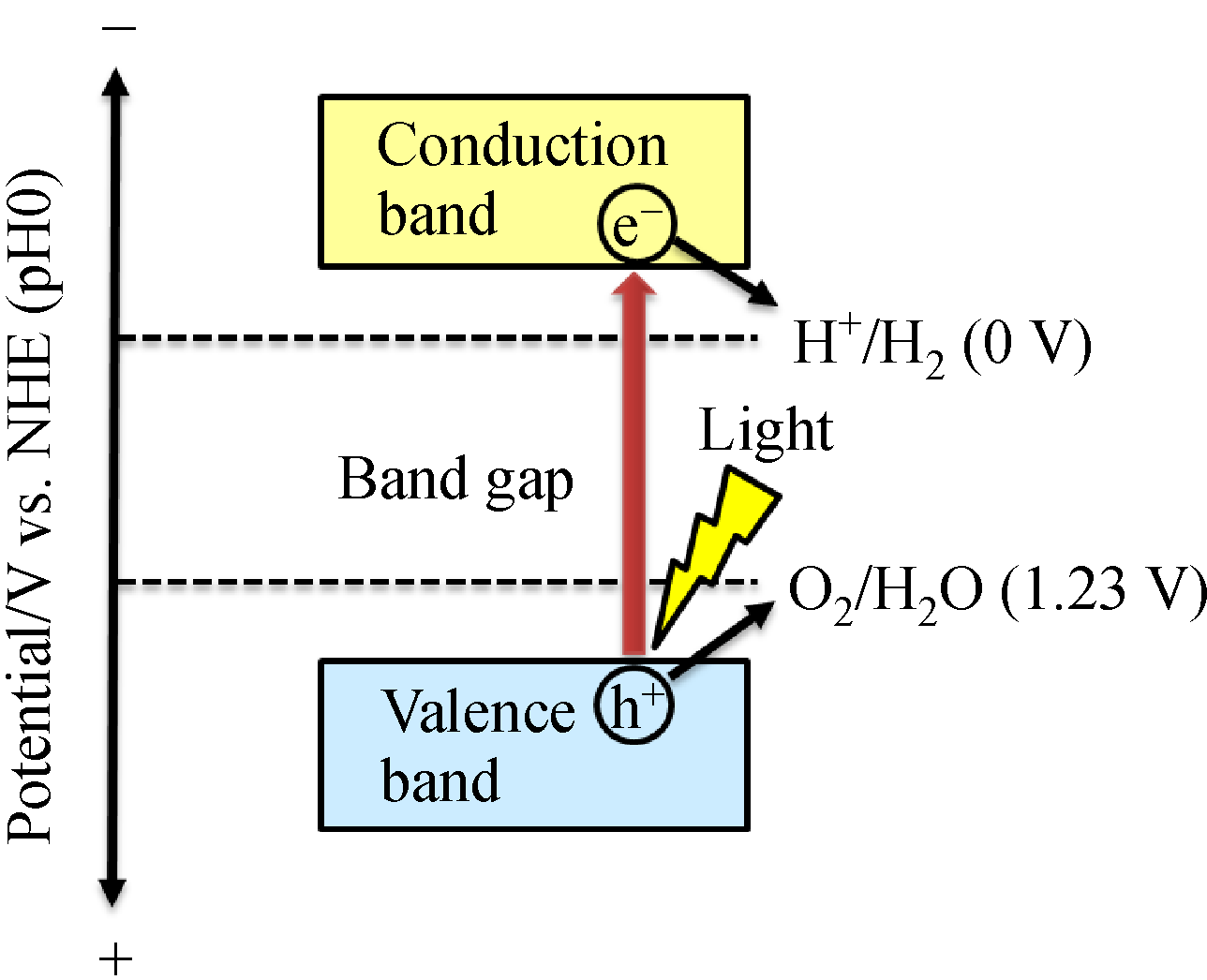In contrast to the single Rh-doped SrTiO
3, a Rh and Sb-codoped SrTiO
3 photocatalyst (SrTiO
3:Rh,Sb) shows photocatalytic activities for both sacrificial hydrogen and oxygen evolutions under visible light irradiation [
30] and can split water under visible light irradiation in the presence of an IrO
x cocatalyst [
31]. The change in the oxidation number of the Rh ion caused by codoping of Sb plays an important role. Both Rh
3+ and Rh
4+ ions exist in SrTiO
3:Rh as prepared. On the other hand, when the Rh and Sb ions are codoped in SrTiO
3, the Sb ion is doped as Sb
5+ at a Ti
4+ site in a SrTiO
3 host. Therefore, the oxidation number of Rh
4+ is controlled to Rh
3+ due to the charge compensation. Additionally, it is confirmed that the IrO
x cocatalyst enhances the activities for sacrificial hydrogen and oxygen evolutions of SrTiO
3:Rh,Sb, which indicates that it works as active sites for both hydrogen and oxygen evolutions on water splitting over an IrO
x/SrTiO
3:Rh,Sb photocatalyst. The Rh
3+ ion and an IrO
x cocatalyst are the key factors for photocatalytic water splitting of SrTiO
3:Rh,Sb. IrO
x/SrTiO
3:Rh,Sb photocatalyst splits water into H
2 and O
2 stoichiometrically under visible light irradiation of up to 500 nm as depicted in Fig. 4 and shows the activity for solar water splitting [
31]. Al-doped SrTiO
3, AgTaO
3, and Na
0.5Bi
0.5TiO
3 photocatalysts show the high activity for solar water splitting [
32–
35]. However, those photocatalysts do not respond to visible light. Therefore, it is notable that the IrO
x/SrTiO
3:Rh,Sb photocatalyst is the visible light responsive oxide photocatalyst, showing the activity for solar water splitting.










